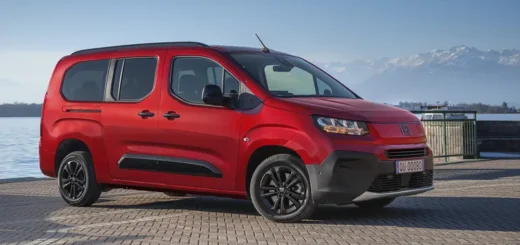Fiat MultiJet II Diesel (in Jeep Compass): Technology Explained
Multijet II is the third-generation of Fiat’s common rail diesel technology.
With the launch of all-new 2017 Jeep Compass, FCA has finally introduced the latest version of Multijet diesel engines in India, almost 8 years after its inception in global markets. Fiat’s Multijet is largely synonymous with modern, powerful-yet-efficient diesel engines in India, that its 1.3-litre version found crowning accomplishments in a variety of cars across segments and brands, can even be heralded as “national” engine of India! The engine also revealed the potential of diesel variants in smaller car segments in India, which led to proliferation of diesel offerings by almost every brands and volume of sales.
In fact, the evolution of modern common rail diesels globally can be attributed to Fiat Group, which came up with electrically-governed fuel injectors using Electronic Control Unit (ECU) in 1990s. Owing to the group’s poor financial state, the design was sold to German component giant Bosch for further development and refinement for mass production. The move was later realised as a strategic blunder as the technology was a phenomenal hit, transforming the stature of diesel engines in the passenger and heavy-vehicle segments.
Also Read: Ford’s 1.0-litre I3 EcoBoost To Get Cylinder Deactivation Tech
The technology debuted in 1997 Alfa Romeo 156 as a 2.4-litre uniJet Turbo Diesel (JTD) engine for the first time. Unlike the conventional diesel motors (indirect), a common fuel rail supplied fuel to all the injectors at high pressure, and the ECU governed the operation of the fuel injectors electronically. This technology made diesel engine operation noiseless and smokeless, but with enhanced performance and fuel efficiency. Later the same year, Mercedes-Benz introduced the technology in its C-Class and other car makers followed suit worldwide.
In 2003, the uniJet Turbo Diesel was upgraded to MultiJet technology. As the name hints, there were multiple injections (totally five) in the new version for a more engaging and steady combustion within a cycle. Previously with the uniJet, there were only two injections per cycle, including a pre-injection or pilot phase which raises the temperature and pressure inside the cylinder for an efficient main stroke. In Multijet, the diesel burnt in each stroke remain the same as before, but multiple smaller injections at certain intervals made the operation quite smoother and less noisy. The injection pressure was also higher – 1,400 bar (20,000 psi) on the 1.3 Multijet and 1,600 bar (23,000 psi) on the 2.4 Multijet variants.
Further, the advanced EUC controls and manipulates the injection injection logic and number of injections based on a multitude of parameters, including engine rpm, torque demanded at the time of drive, and coolant’s temperature. The quintessential 1.3-litre Multijet was launched in 2003, the smallest 4-cylinder diesel engine at the time with an unbelievable fuel consumption of just 3.3 litres per 100 km. Later in 2005, the engine was already Euro IV compliant, even without the use of a diesel particulate filter!
MultiJet II
Fiat Powertrain Technologies came up with the updated MultiJet technology in 2009. The system features eight consecutive injections per combustion cycle (up from 5 in MultiJet I) and Injection Rate Shaping (IRS) technology of allowing two very close pilot injection resulting in a more continuous and modulated fuel delivery. The shutters of fuel injectors (solenoid valve) are hydraulically balanced to avoid reduction in shutter strokes, while the higher injection pressure up to 2,000 bar (29,000 psi) gives precise controlling of the injected fuel, making it quicker and more flexible than before. All these changes have lowered the NVH (Noise-Vibration-Harshness) levels and fuel consumption, extracting more power for every unit of fuel burned, elevating the efficiency of the diesel mill to whole new levels. The technology is Euro VI compliant.

The 2.0-litre Multijet II diesel engine in 2022 Jeep Compass drives a force of 170 HP, with a torque of 350 Nm and fuel efficiency of 17.1 kmpl.
The 2.0-litre MultiJet II that is used in the new Jeep Compass is 1,956cc, four-cylinder in-line, DOHC motor with 16 valves (4 per cylinder) and turbocharging. The first version of this engine was used in 2008-2009 Lancia Delta and Alfa Romeo 156. Later on, the engine went on to power Fiat Sedici, Fiat Bravo, Fiat Doblo, Fiat Freemont, Suzuki SX4, and Jeep Renegade among others. With the split of Fiat-GM joint venture, General Motors developed their own version of the engine under their ‘EcoTec’ family for its Opel and Vauxhall cars. Producing 172 bhp of max power at 3,750 rpm and 350 Nm of torque at 1,750 rpm, the MultiJet II engine in Jeep Compass is much-smoother to rev and run than majority of cars in its class, not to forget its amazing acceleration especially at low and mid ranges. The 6-speed manual gearbox is nice to work with, especially at city driving conditions, although most of its buyers would miss the 7-speed DCT automatic transmission offered in the petrol variants.
Also Read: Jeep’s B-segment SUV To Sit On X6H (Next-Gen Punto) Platform
In the years to come, FCA is expected to extend the MultiJet II engines to a variety of cars in India, including that of Fiat and Jeep brands, along with future Maruti Suzuki models and Tata Motor’s upcoming ‘global’ SUVs codenamed ‘Q501’ and ‘Q502’ that are currently under development. The company has already signed an agreement with the two car makers for supplying around 2.2 lakh units of its 2.0-litre MultiJet turbo-diesel engines.











